A&B Presents Ag Plan to Committee, Testimony Focused on GMO Concerns
A&B on Tuesday presented their “diversified agriculture” plan to the Maui Policy, Economic Development and Agricultural Committee.
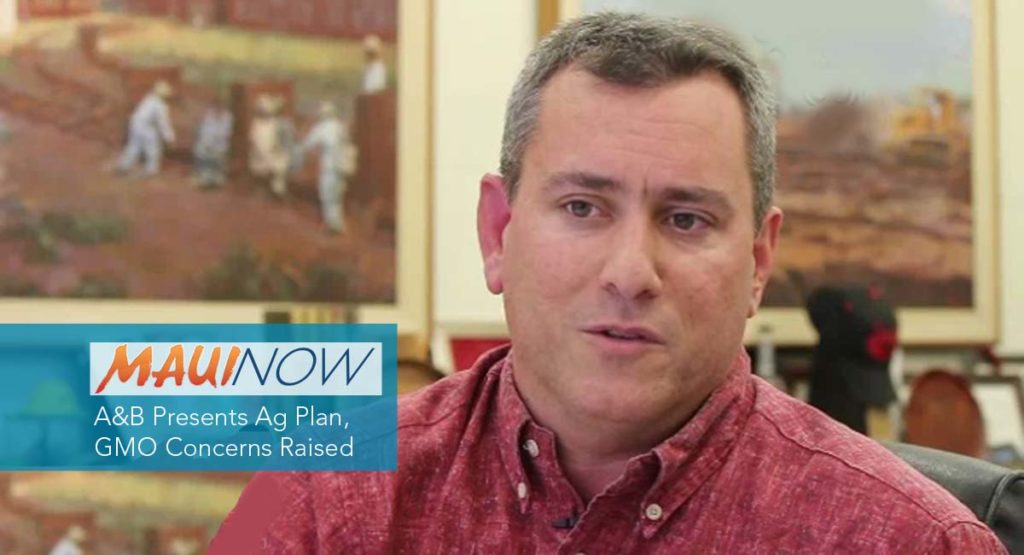
Rick Volner. File photo by Wendy Osher.
A total of 66 people signed up for public testimony with many expressing concerns over GMO crops, which company executives say are not being considered as a food crop.
The discussion grew heated as Committee Chair Yuki Lei Sugimura pushed public testimony to the latter part of the meeting and pointed to emails that were circulated from last week saying the communications “activated” concerns over GMO farming.
One of those email letters came from the Hawaiʻi Center for Food Safety and encouraged testimony to ensure that “diversified agriculture on Maui is TRULY diversified and sustainable: that is, the production of local foods suitable for local production, building soil and feeding people.”
Although Chair Sugimura said the agenda item was not about GMO, committee member Elle Cochran defended testimony relating to GMO crops noting that A&B’s plans were already shared with the public in advance of yesterday’s meeting.
A&B’s presentation on Tuesday included information on 2017 feedstock trials, exploring costs associated with bioenergy crops, and detailing livestock operations. A representative with TerViva, William Kusch also discussed A&B’s pongamia crop, and Alex Franco with the Maui Cattle Company talked about divrsified ag plans being conducted in conjunction with A&B.
Rick Volner Jr., general Manager for A&B’s diversified agriculture operations led a PowerPoint presentation. “We feel we are uniquely situated to find out what exactly these lands can do, and what, ultimately, their agricultural impact will be for Maui and Maui County,” said Volner.
“To that end, we’ve launched a research and development investment which is necessary to determine the viability (and) the scale on a number of different initiatives, three of which you will see listed here: our livestock operation; our growing operation, which is mainly focused on bioenergy feedstocks…; and of course agricultural leasing.”
Volner said, “Some people have criticized the role of Alexander & Baldwin in looking to lease agricultural land, but we feel it is the best way to get real farmers on the land, and do the things that they ultimately know how to do better than we can.”
Volner said he thinks bioenergy, which he described as “agricultural based renewable energy,” is the “key to diversification.”
“Some of the initiatives that we are currently exploring are anaerobic digestion in which biomass is taken and bacteria is allowed to decompose to produce methane, which can be converted to compress natural gas or liquefied natural gas,” both of which he said could be used to produce electricity or potentially as a transportation fuel.
To that end, A&B recently signed a commercial feedstock agreement with a group that is developing a renewable energy source at the Kahului Wailuku Wastewater Treatment Plant. “We think that’s an important first step in understanding the commercialization abilities for bioenergy on Maui,” said Volner.
A&B is also exploring biomass for combustion, which Volner said HC&S did for hundreds of years, “but instead of utilizing the spent fiber from the sugarcane plant, there could be purposely grown tropical grasses such as sorghum… and other woody plants.”
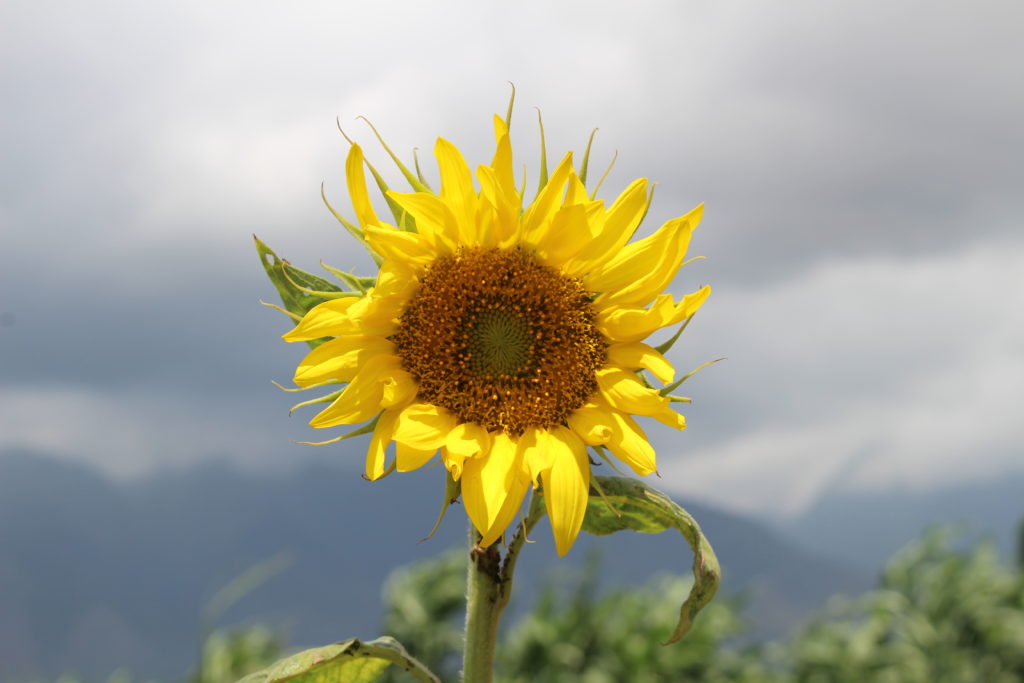
Maui Sugar: End of an Era – Diversified Ag Trials. PC: by Wendy Osher
Central Maui Feedstocks – 2017 trials
“The most obvious and important question that we are trying to answer is what are the yields and what are the costs to produce these feedstocks on Maui,” said Volner.
“In 2016, on the heels of the announcement that sugar production would be ending at HC&S, we launched our Central Maui feedstocks research and development trials to determine the optimal irrigation system designs, to understand their unique agronomic conditions–things that we normally didn’t even consider when it came to sugarcane production.”
“That data that we collected in 2016, was extremely valuable on crops that traditionally were not grown in Hawaiʻi or were not grown at a commercial scale,” said Volner. A&B has since ramped up those trials to identify over 12,000 acres that company officials believe are well suited for mechanized cultivation and harvesting operations. Crop experimentation included sorghum, corn, soybean, sunflowers and other cover crops.
The county signed a first of its kind feedstock agreement to produce purpose-grown bio-gas feedstock on approximately 500 acres for a renewable energy project being developed in conjunction with the county.
The 2017 trials have ramped up to commercial scale including a 140 acre corn planting, with harvesting recently completed within the last two weeks. Volner said ramping up even further to a commercial scale-up to 500 acres will help to validate yields and cost of production models.
Bioenergy Economics
“We believe that bioenergy costs may be higher initially than current renewables but,” Volner said it may offer other benefits including grid services, diversification of generation and support of agriculture.
He said the company remain wary of compounding farming risk with technology risk saying they are cautions as there are no significant examples of projects fueled exclusively by purpose grown crops and commercially grown feedstock.
Company representatives say they are searching for ways to access multiple markets and co-products.
Volner said there are still significant questions over what are the costs and yields to produce on Maui.
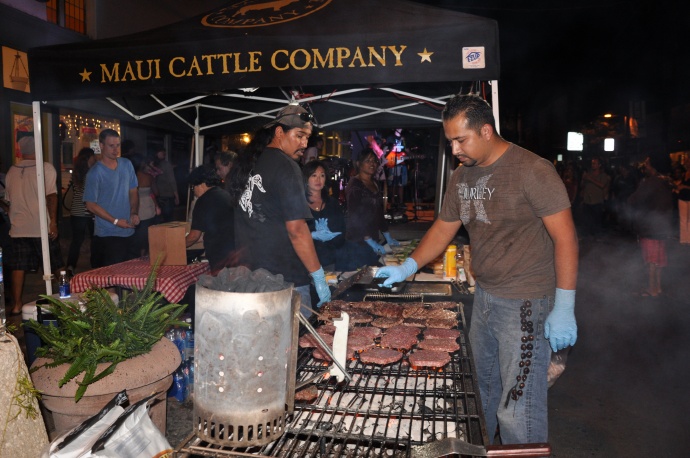
Wailuku First Friday, Maui Cattle Company. Courtesy Photo.
Livestock Initiative:
“In 2015, we we launched an initial grass finish trial with the help of Maui Cattle Company on a small scale on former sugarcane lands. These were improved pastures that were installed to include fencing, purposely planted forages… and we were actually very happy with the initial grass finish trials. We felt it produced a very favorable product with superior consistency.”
“That gave us the confidence that this project could be expanded and potentially could be a way to keep 3,500 to 4,000 head of cattle from leaving the state and then actually coming back to fill your refrigerator,” said Volner.
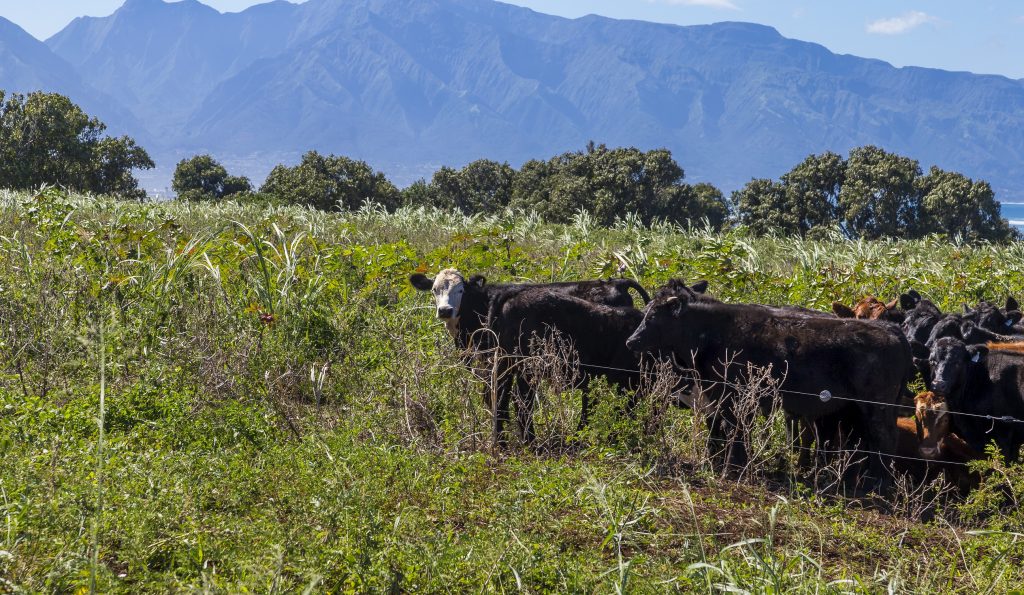
A&B cattle ranch. PC: Alexander & Baldwin
An infrastructure build out has started that requires fencing, livestock watering systems and permanent irrigation.
Expansion is currently underway, and by the end of the year, A&B will have over 5,000 acres improved and dedicated to the herd and improvement of livestock on Maui.
The company also recently signed a ground lease for a new slaughter facility, identified as a critical path to expanded beef production on Maui.
Pongamia Trial:
A&B also signed a memorandum of understanding with TerViva for to plant a pongamia crop on 250 acres. Volner said he believes there is an opportunity to grow that crop well into the thousands of acres in the Central Valley.
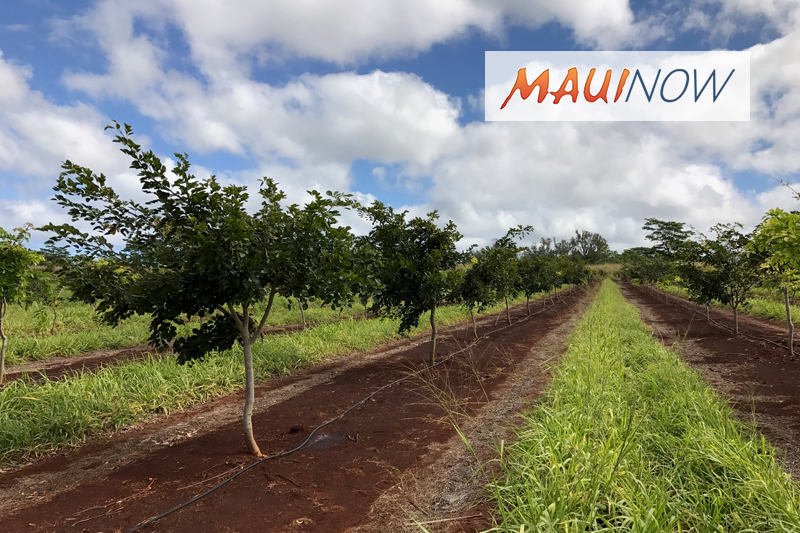
Pongamia crop. Photo credit: TerViva
Company representatives say pongamia is a non-GMO orchard crop that can restore soil health while producing valuable oil seeds.
“While pretty, pongamia is hardy enough to thrive in conditions too challenging for conventional crops,” TerViva representatives said.
Pongamia produces three co-products similar to soy: vegetable oil, plant protein, and biomass.
TerViva representatives say 50 acres are growing and beginning to yield on the North Shore of Oʻahu. The company should have 200 acres in production by end of 2018 and is currently establishing commercial acreage and processing capacity on Maui.










